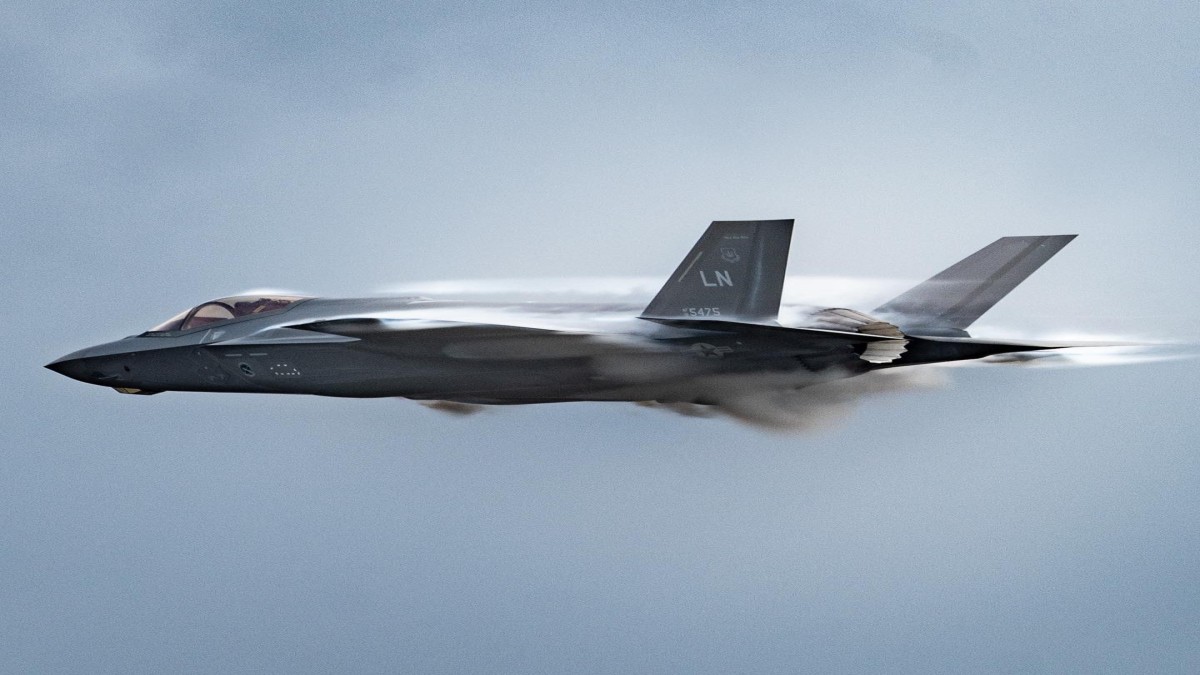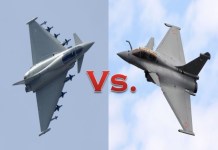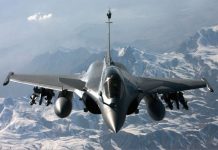On January 28, an F-35A Lightning II fighter jet crashed at Eielson Air Force Base in Alaska during a training exercise. The pilot experienced an in-flight malfunction but ejected safely. The accident has caught the world’s attention.
The F-35 Lightning II, manufactured by Lockheed Martin, is one of the world’s most advanced multirole stealth fighters, used by several nations for various air combat missions.
With its sophisticated technology, the F-35 was designed to be a revolutionary leap in aerial warfare, offering advanced stealth, sensor fusion, and unprecedented combat versatility.
However, despite its promise, the aircraft has had its share of incidents that raise questions about its safety and operational readiness. Are these incidents simply part of the evolutionary process of integrating a complex new weapon system, or do they point to deeper, systemic issues that could undermine the fighter’s effectiveness in the long term?
A Brief Overview Of The F-35 Program
The F-35 program began in the late 1990s as part of the Joint Strike Fighter (JSF) initiative, which aimed to develop a next-generation aircraft that could serve the needs of multiple branches of the U.S. military and those of allied nations.
The F-35 comes in three variants: the F-35A (conventional take-off and landing), the F-35B (short take-off and vertical landing), and the F-35C (carrier-based).
The aircraft boasts advanced stealth features, an unparalleled sensor suite, and the ability to operate in highly contested environments. The F35 development program faced delays, cost overruns, and technical challenges in the earlier phases of its deployment.
Nevertheless, the aircraft has entered service with multiple air forces and naval fleets, including the U.S., the U.K., Israel, Japan, and others.

Notable Accidents And Incidents
Over the years, some accidents and incidents involving the F-35 have raised concerns about its safety. Some of these accidents have been relatively minor, while others have resulted in significant damage to the aircraft or loss of life.
Notably, the F-35 has experienced problems with its engine, landing gear, and software systems. Overview of F-35 accidents and incidents, according to open media sources, is as follows:-
- 19 May 2020: A U.S. Air Force F-35A from the 58th Fighter Squadron crashed during landing at Eglin Air Force Base, Florida. The pilot ejected and was rescued in stable condition. The accident was reportedly attributed to a combination of pilot error induced by fatigue, a design issue with the oxygen system, the aircraft’s complex and distracting nature, a malfunctioning head-mounted display, and an unresponsive flight control system.
- 29 Sep 2020: A U.S. Marine Corps F-35B collided with a KC-130 during air-to-air refueling over Imperial County, California. The F-35B pilot was injured during ejection, and the KC-130 crash-landed in a field without deploying its landing gear.
- 12 Mar 2021: During a night flight near Marine Corps Air Station Yuma, Arizona, a round fired from the belly-mounted 25mm gun pod on an F-35B detonated shortly after leaving the barrel. The pilot was uninjured, but the aircraft was grounded for maintenance for more than three months.
- 17 Nov 2021: A Royal Air Force F-35B crashed during routine operations in the Mediterranean. The pilot was safely recovered to HMS Queen Elizabeth. The crash was determined to have been caused by an engine-blanking plug left in the intake.
- 4 Jan 2022: A South Korean Air Force F-35A made a belly landing after all systems failed except the flight controls and the engine. The pilot landed the plane without deploying the landing gear and walked away uninjured.
- 24 Jan 2022: A U.S. Navy F-35C suffered a ramp strike while landing on the USS Carl Vinson and was lost overboard in the South China Sea. Seven crew members were injured, while the pilot ejected safely and was recovered from the water. The aircraft was recovered from a depth of about 12,400 feet with the aid of a remotely operated vehicle.
- 19 Oct 2022: An F-35A crashed at the north end of the runway at Hill Air Force Base in Utah. The pilot safely ejected and was unharmed. The crash was caused by errors in the air data system from the wake turbulence of a preceding aircraft.
- 15 Dec 2022: An F-35B crashed during a failed vertical landing at Naval Air Station Joint Reserve Base Fort Worth in Texas. The government test pilot ejected on the ground and was not seriously injured.
- 17 Sep 2023: An F-35B crashed after the pilot ejected over North Charleston, South Carolina, following a mishap during a training flight. The pilot was unharmed, and the wreckage was found the following day.
- 28 May 2024: A developmental test F-35B crashed shortly after take-off from Kirtland Air Force Base in New Mexico. The pilot ejected and was reportedly injured.
- 28 January 2025: An F-35A crashed at Eielson Air Force Base in Alaska. The pilot was reported not injured.

Focus Areas
The F-35 program has provided several valuable lessons learned from its accidents and incidents. These lessons span design improvements, pilot training, maintenance practices, and operational considerations. Some of the key takeaways are as follows:-
- Improved Pilot Training and Situational Awareness: The complexity of the F-35’s systems requires advanced training to ensure pilots can effectively handle the aircraft in emergencies.
- Enhanced Mechanical and System Design Improvements: The F-35’s advanced technology provides unprecedented capabilities but has led to integration and system reliability challenges. Hardware and software fixes are periodically needed to address these.
- Aircraft Maintenance and Logistical Support: Aircraft maintenance plays a critical role in ensuring aircraft safety and reliability. Maintenance-related issues have been a contributing factor in a few cases.
- Design Flexibility and Rapid Response to Failures: The ability to quickly address design flaws and technical failures is critical for maintaining the aircraft’s operational capability.
The Evolutionary Process: Accidents As Part Of Development
From the perspective of aviation development, accidents are not uncommon. History is replete with examples of military aircraft programs that experienced growing pains.
Technical issues and mishaps are expected early in any new aircraft’s operational use, particularly with as many advanced features as the F-35.
The F-35 is a highly complex system, and as with any cutting-edge technology, teething problems are inevitable. The F-35’s early struggles might be necessary to perfect a revolutionary design.
In this sense, the F-35’s accidents can be considered part of the normal process of advancing a new weapon system toward full operational capability.
Cause For Alarm: Systemic Issues And Risks
However, the continued incidents involving the F-35 cannot be entirely dismissed as part of the evolutionary process. As the aircraft enters full-scale service across multiple countries, the sheer number of accidents and technical problems may suggest deeper systemic issues.
Moreover, the safety concerns surrounding the F-35 could have strategic consequences. If accidents continue to occur significantly, it could undermine the aircraft’s ability to perform in combat scenarios, potentially putting both pilots and missions at risk. The loss of an aircraft, particularly in a combat zone, could have severe consequences for the military.
Balancing Optimism With Realism
The F-35’s complexity is its greatest strength and weakness. While providing cutting-edge capabilities, the aircraft’s advanced systems also create a dependency on maintenance crews, spare parts, and software systems.
If any of these elements fail, it could lead to operational delays or mishaps. A continued lack of readiness or failure to address recurring technical problems could strain military resources and decrease confidence in the aircraft’s long-term viability.
While the accidents involving the F-35 can be seen as part of the normal evolution of a complex and cutting-edge aircraft, the continued problems cannot be ignored.
The F-35’s development mirrors the typical challenges of revolutionary military technology, but the program must move quickly to address the emerging issues.
The question remains: will the F-35 overcome its growing pains to emerge as the next generation of air dominance, or will it be remembered as a cautionary tale of technological overreach and mismanagement?
The answer lies in how effectively the program addresses its ongoing challenges and whether it can evolve from a series of accidents into a proven, reliable asset for the world’s military forces.
- Air Marshal Anil Khosla is a former Vice Chief of Air Staff (VCAS) of the Indian Air Force and AOC in C of Eastern Air Command.
- VIEWS PERSONAL OF THE AUTHOR
- He tweets at: @AnilKhosla16




